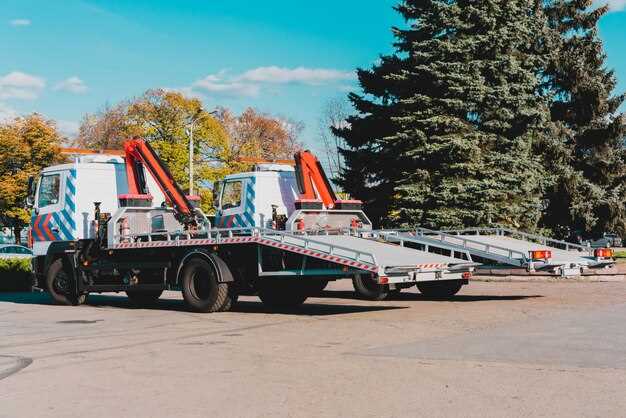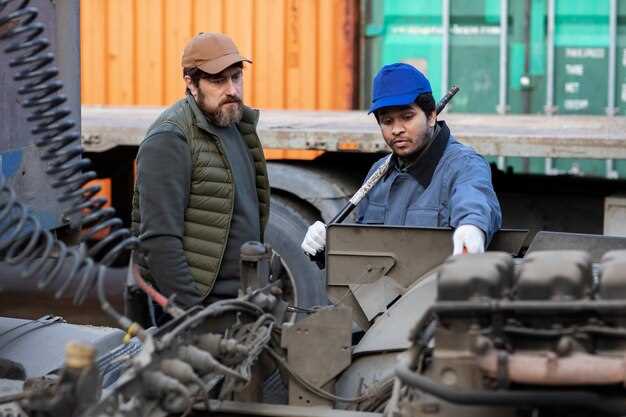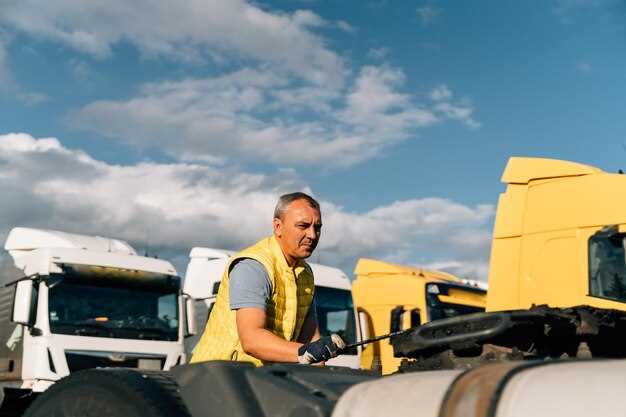
When it comes to seasonal work, the logistics of transporting equipment can often be a complex endeavor. Ensuring that machinery, tools, and other essential items are safely and efficiently moved from one location to another demands a careful approach, particularly when using a trailer. Understanding the best practices for equipment hauling during peak seasons can significantly influence productivity and operational success.
To optimize the process of moving heavy machinery and seasonal gear, it is crucial to assess the right type of trailer for the job. Different equipment, such as tractors, generators, or construction tools, requires specific hauling solutions to ensure safe transport. Additionally, seasonal factors such as weather conditions and road maintenance must be taken into account to prevent potential delays and damages.
Implementing a thorough planning process enhances overall efficiency and reduces the risk of accidents during transportation. This requires understanding weight limits, securing loads properly, and evaluating the routes to be taken. By focusing on these key insights, businesses can ensure their seasonal operations run smoothly and effectively, allowing teams to focus on their core work without the burden of logistical challenges.
Choosing the Right Trailer for Your Seasonal Needs
Selecting the appropriate trailer for your seasonal equipment hauling is crucial to ensure efficiency and safety during your work. Each season presents unique challenges and demands, making it essential to align your choice of trailer with specific requirements and equipment types.
In the spring and summer months, when outdoor activities peak, consider trailers that can accommodate bulky equipment such as lawn mowers, landscaping tools, or recreational vehicles. A flatbed trailer may provide the versatility needed for transporting larger items, while a utility trailer can cater to smaller, varied loads typical during these seasons.
As fall approaches, the focus may shift to hauling gear for harvests or preparing for winter. Enclosed trailers can offer protection against the elements, ensuring that sensitive equipment remains dry and secure. This choice not only extends the life of your tools but also enhances your ability to work efficiently in unpredictable weather conditions.
Winter months often require heavy-duty trailers designed to carry snow removal equipment or construction materials. Look for trailers equipped with features like reinforced flooring and superior weight capacity, addressing the increased wear and tear expected during colder months. Prioritizing durability and strength will ensure that your trailer meets the rigorous demands associated with seasonal work.
Ultimately, the right trailer for your seasonal needs hinges on understanding the specific requirements of the equipment you intend to haul. Evaluating factors such as size, weight capacity, and weather resistance will enable you to make a well-informed choice that enhances both performance and safety throughout the year.
Safety Considerations for Equipment Transport During Peak Seasons

Transporting equipment during peak seasons poses unique challenges that require careful planning and execution. Seasonal weather conditions can drastically affect road safety, making it essential to assess forecasts and prepare for potential hazards. Operators should choose appropriate routes that consider road conditions and traffic patterns, as congestion can lead to delays and increased risk.
Equipment should be thoroughly inspected before transport to ensure that it is in optimal working condition. This includes checking brakes, lights, and securing loads properly. A steady and careful driving style is crucial, especially when navigating through busy areas where pedestrians and other vehicles abound.
Work schedules should account for seasonal demands, allowing for sufficient time to complete hauls without feeling rushed. This not only enhances safety but also mitigates the risk of accidents caused by fatigue or haste. It is also advisable to comply with local regulations that may vary during peak seasons, as different areas could impose specific restrictions related to travel times or load limits.
Finally, adequate training for personnel involved in the transport process cannot be overlooked. Providing your team with the knowledge and skills necessary to handle equipment safely will significantly improve overall safety outcomes during the hectic seasons. Careful planning and a proactive approach will ensure that transporting seasonal equipment remains efficient and safe.
Best Practices for Loading and Unloading Seasonal Equipment

Loading and unloading seasonal equipment requires careful planning and execution to ensure safety and efficiency. Adhering to best practices can significantly reduce the risk of damage and maintain the integrity of your equipment.
First and foremost, conducting a thorough assessment of your equipment is essential. Before beginning the loading process, inspect all items for any signs of wear or damage. This helps in making the right choice of handling methods during loading and unloading.
Utilizing appropriate tools and equipment, such as dollies, ramps, and hoists, will facilitate a smooth process. These tools not only enhance safety but also optimize the speed at which you can work. Always ensure that the tools are in good condition and rated for the weight of the seasonal items being handled.
When loading, it is important to maintain a balanced load. Distribute weight evenly across the hauling vehicle or trailer to prevent shifting during transport. This not only protects the equipment but also enhances vehicle stability.
During unloading, follow a methodical approach. Clearly communicate with team members to avoid accidents. Designate a leader to oversee the process, ensuring that everyone understands their roles. Utilize teamwork to handle larger equipment safely, utilizing proper lifting techniques to avoid injury.
Consider the environment when loading and unloading. Be mindful of weather conditions and choose a suitable area that is flat and free of obstacles. This reduces the risk of slips or falls, providing a safer operation overall.
Lastly, once the equipment is unloaded, conduct another assessment to ensure everything is in proper condition for its seasonal use. This practice establishes a standard for future operations and enhances the longevity of your equipment.





